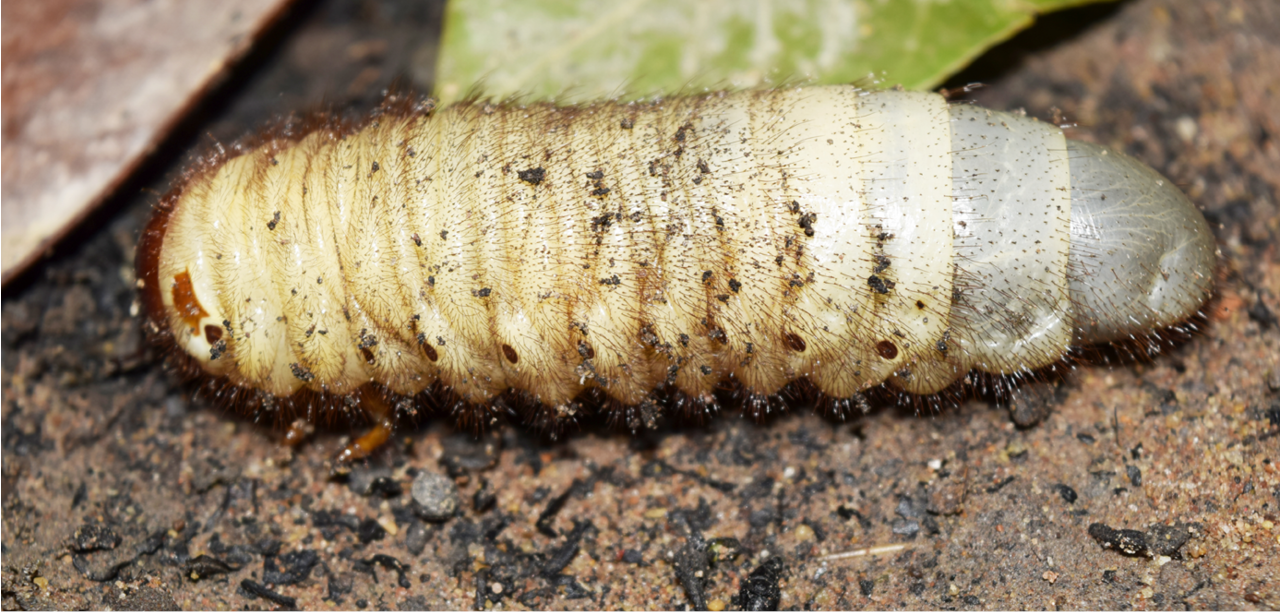Leatherjacket Infestations
Is your lawn thinning and patchy in areas?
Have you checked for Leatherjackets?
What are Leatherjackets?
Leatherjackets are the larvae of crane flies, also known as daddy long legs. They are common pests in lawns, with over 300 species in the UK. These larvae live just below the surface of the lawn and eat grass roots, causing damage. Adult crane flies come out between August and October to lay eggs. These eggs hatch into new larvae, which start eating the grass roots, continuing the cycle.

How do I know if I have a Leatherjacket infestation?
To know if there are leather jackets in your garden, look for a few signs.
- Leather jackets are black or brown, making them hard to spot in the lawn. You might not notice them until they’ve already damaged the grass.
- One clue is seeing birds pecking at the soil in winter and the lawn in spring and early summer, as they hunt for the larvae.
- Larger animals might also dig up the lawn, leaving bigger damaged areas.
- If your lawn starts to wither, thin out, or die back, it could be due to leather jackets.
- The biggest hint is when the lawn thins out quickly, especially in shady areas, and you see holes and divots from birds pecking.
- During wet weather, leather jackets might even appear on hard surfaces like paths or paving.
When do Leatherjackets usually appear?
Leather jackets usually appear after a warm, wet, and mild autumn, which helps the tiny, newly hatched larvae survive. Although they start feeding on the lawn in autumn, many die from drought and don't grow big enough over winter to cause much damage. The real problems begin in spring when the grubs start feeding again and can cause significant harm to your lawn.
What can I do?
-
To repair damage from a Leatherjacket infestation, you can revive your lawn if there is still a fair amount of grass left.
In late spring and summer, you can do a mechanical lawn renovation. This involves scarification (raking the grass with a long tined rake, removing dead grass and moss), aeration (making small holes using a garden fork), overseeding (adding new grass seeds), and top dressing (adding a thin layer of soil). These steps can help bring your lawn back to life.
If your lawn is very bare, you might need to returf or reseed it. Before doing this, make sure all the leather jackets are gone by rotovating or digging over the lawn to expose any remaining larvae to birds and other predators.
-
- The easiest way to check for the larvae is to dig a series of small test holes with a fork, to a depth of about three inches below the lawn surface.
- Pay particular attention to any areas of turf which appear stressed or thinning, particularly around the edges in shady areas such as next to the fence or wall.
- If your lawn has been affected, you will notice that the root structure will be very weak so the grass may lift away easily from the lawn.
- Where possible, try to eliminate the grubs from the lawn before they cause any more damage. The most effective solution is to either cover the whole lawn (or just the effected area) overnight with black plastic sheeting - this encourages the grubs to come to the surface so they can be brushed off and destroyed.
- Birds eat many Leatherjackets, and you can help them by forking over the soil in spring to expose the grubs.
-
Prevention is key to stopping larvae from coming back.
A professional pesticide called Acelepryn can help control Leatherjackets. It should only be applied by a qualified professional, ideally when the grubs are very young. It can only be used once per year.
An organic solution involves using Nematodes, which are microscopic worms that infect and kill the grubs with a bacterial disease.
Nematodes can be bought from horticultural suppliers. For them to work well, you need to apply them correctly, paying attention to timing, soil moisture, and the age of the larvae.
You should apply nematodes between August and October when the ground is warm and moist, as this is when adult crane flies lay eggs, and the young grubs start feeding.
Some people have had success with another application in spring (April/May) when the soil temperature is above 12 degrees celsius.
Caring for your garden
For more information on how to keep your garden in the best condition, visit our Gardening Advice